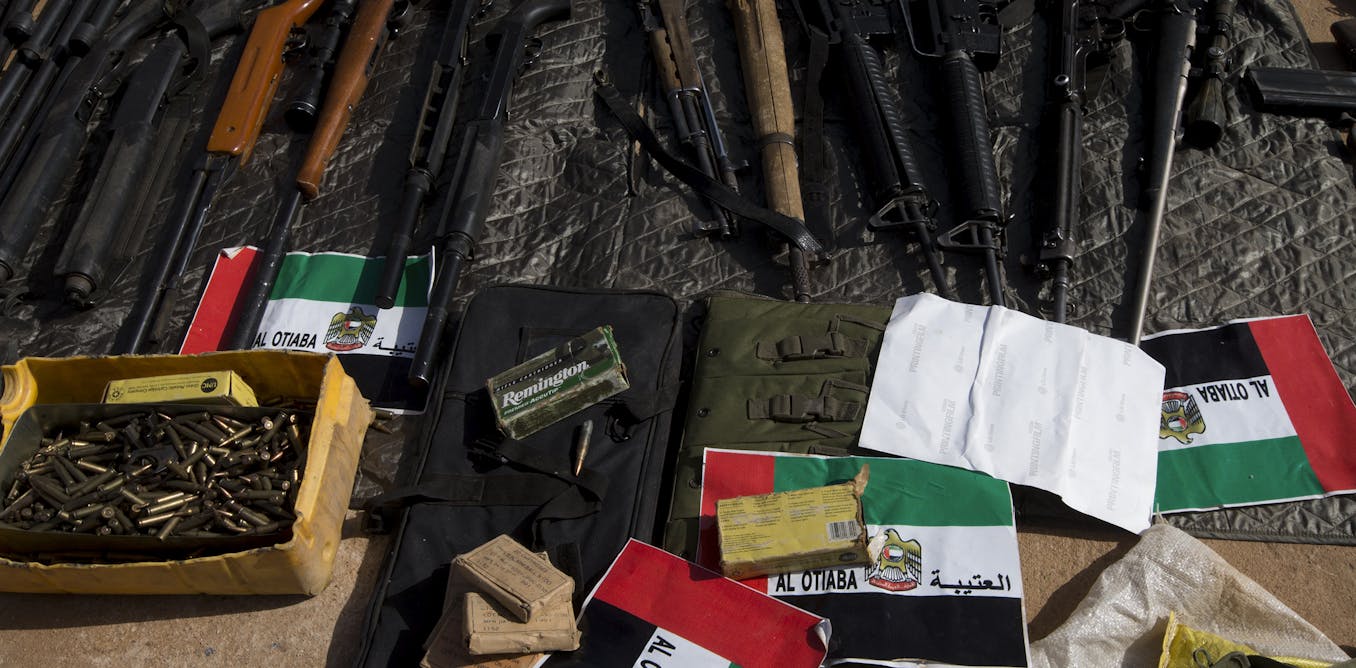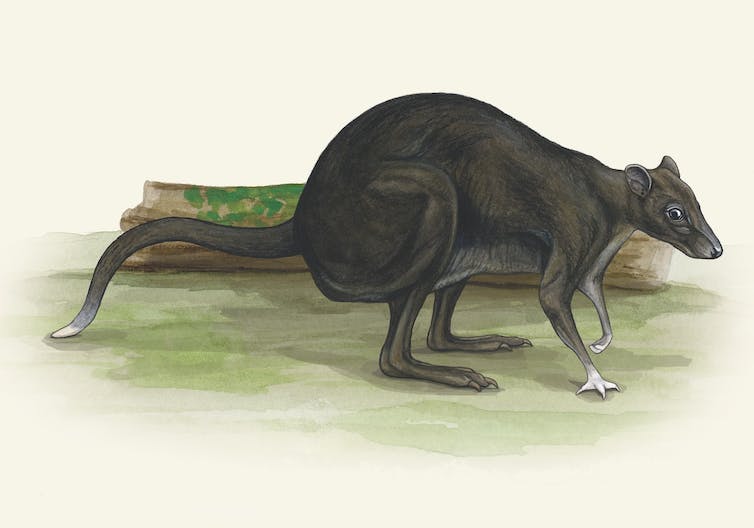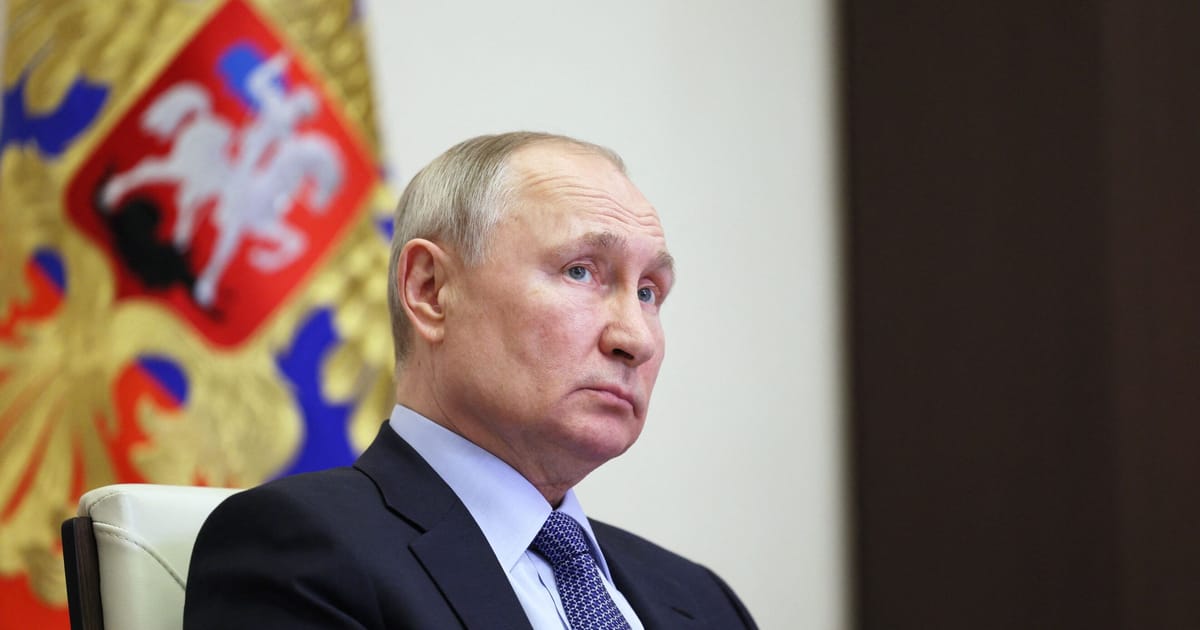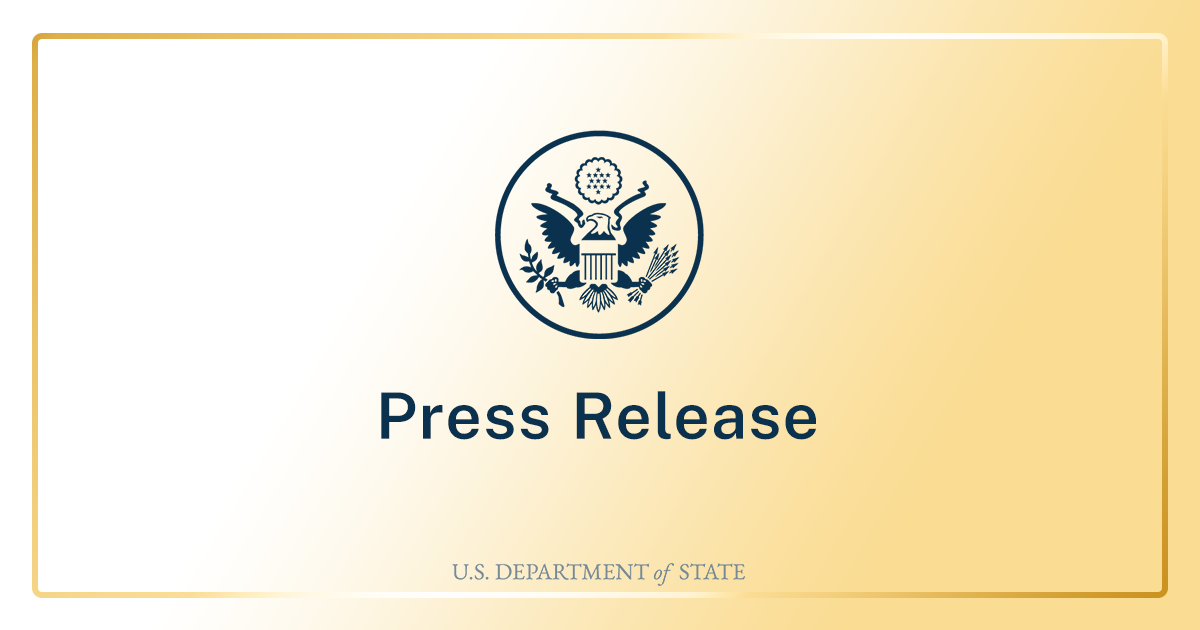As west Africa urbanises, many cities have become interconnected through trade, travel and technology, and crime has increased in complexity and scope. The proliferation of arms in west African cities, especially in the aftermath of conflicts in Libya (2011) and Mali (2012), has added to these challenges in Bamako, Mali’s capital.
In 2018, the Small Arms Survey estimated that roughly 40% of violent deaths in Mali were committed with firearms. The figure may be even higher for injuries. A 2022 United Nations report showed that 300 assault rifles, 49 artisanal arms and 22 machine guns were seized in Mali between 2014 and 2020 by security agents.
Arms trafficking from Libya after the civil war there and the fall of Muammar Gaddafi increased especially from 2011 to 2013. This enhanced the capability of armed groups and terrorists in parts of the Sahel, particularly Mali. Hundreds of Tuareg fighters left Libya during and after the conflict, bringing anti-tank weapons, mortars and heavy machine guns with them into northern Mali. Arms were brought into Mali for use by groups that prey on communities and those who seek to defend themselves. Selling arms is also a source of funding for extremist groups.
Arms trafficking is fuelling the problems that have emerged in Bamako with rapid population growth.
Home to over 2.4 million people, Bamako is the political and economic capital of Mali. Sprawling slums are fast emerging within the city and becoming landscapes of protracted unrest, civil conflict, violent extremism and urban insurgency.
I’m a scholar of urban planning who conducts research on security issues. In a recent study I analysed the complex relationships between urbanisation and arms trafficking in Bamako. The study focused on how illicit arms shape urban violence and are used by criminal groups.
I recommended an integrated approach to dealing with the problem, with roles for authorities and residents. Collaboration between government and communities in crime prevention is essential for creating safer, more resilient and cohesive societies. It harnesses different strengths to address the complex and multifaceted nature of arms trafficking.
UN troops to withdraw from Mali: what will change in terms of security
Arms trafficking in the region
The study, conducted between November 2021 and August 2022, interviewed respondents from the customs services, police, gendarmerie, National Transitional Council of Mali and judges. We also spoke with civil society organisations and city residents and drew from the Armed Conflict Location and Event Data project.
Respondents told me that arms are trafficked along the 4,200km long Niger River. According to military sources in Bamako, these are mostly small calibre weapons.
Arms are also trafficked along the trans-Saharan route, which includes Libya, Algeria, Niger and Menaka, Mali. The arms finally reach Bamako and other conflict settings in west Africa through organised networks.
A substantial number of illicit weapons in Bamako are manufactured in illegal workshops within the city itself. Nearly 80% of the weapons that have been seized come from these artisanal workshops, according to an official document I saw in Bamako. The rugged geography of Bamako helps to conceal these factories, which are located in caves, behind hills and in ravines.
Drivers of arms trafficking
According to Armed Conflict Location and Event data analysed in my study there have been 34 attacks in Bamako and its peri-urban areas since 2011. They included a suicide bombing at the Kati army barrack, hijacking of 19 trucks and their containers, and arson. These attacks have been attributed to armed criminals (62%) and terrorist groups (21%). In 2015, there were seven such incidents.
In Bamako, the increasing presence of transnational terrorist groups is a major driver of arms trafficking. It’s part of a mix of urbanisation and unemployment bringing social, economic and security challenges.
While the city offers job prospects, rapid urbanisation is outpacing job creation. In Mali, 73% of employment is informal and youth unemployment is 32%. The national poverty rate in Mali rose from 42.5% in 2019 to 44.8% in 2021.
I discovered from my research that poverty and limited access to resources create fertile ground for recruitment by extremist groups who exploit grievances, disillusionment, and a sense of injustice among marginalised urban populations. Such groups of people are recruited by trafficking networks and armed groups operating in the city. The complexity of urban settings provides cover for trafficking networks to operate discreetly.
Al-Qa’ida in the lands of the Islamic Maghreb, Al Mourabitoune Battalion, part of Jama’at Nusrat Al-Islam Wal-Muslimin and the Group for Islam and Muslims coalition of militant Islamist groups are dominant violent extremist groups with international reach. They use their connections to procure and smuggle arms to Mali and operate cells on the fringes of Bamako.
In Mali, the production and trading of small arms is a livelihood, particularly among artisanal blacksmiths, according to official documents seen during my research. Homemade weapons proliferate in some districts of Bamako.
Military weapons also get into the wrong hands through attacks on armed security personnel and armouries by armed groups. In Bamako and its outskirts, insurgents and military insurrectionists regularly launch deadly attacks on security forces’ outposts, military installations, security convoys and checkpoints to loot weapons. Some of these weapons are used for self defence and robberies. They are also sold to insurgents.
Mali crisis: UN peacekeepers are leaving after 10 years – what’s needed for a smooth transition
Bamako’s inner city is dotted with slums. Poor urban planning is an enabler of arms trafficking. Uncompleted and abandoned buildings in Bamako have become places where criminals can plan their operations, as well as stockpile and distribute illicit firearms.
What to do about it
Addressing arms trafficking and the associated security challenges in the city requires an integrated approach with complementary actions by state authorities, civil society and city residents.
The authorities in Bamako must foster proactive policing of urban gangs and other local crime groups that drive local arms production and usage.
Police must also build relationships with local communities. This will encourage information sharing and cooperation.
All gunsmiths should be formally registered so that it’s possible to track the scale, pattern and supply of arms production.
The city government in Bamako can make regulations to prevent buildings from being left incomplete or abandoned. Buildings like this must also be properly policed so they aren’t used as criminal hideouts.




